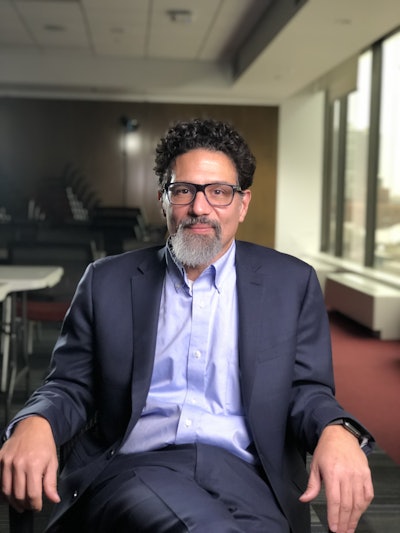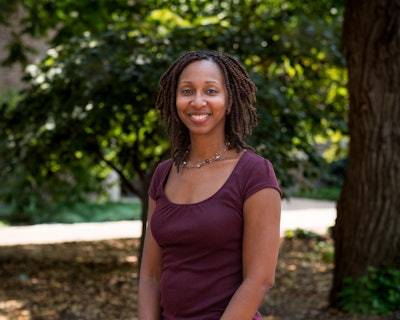The pandemic’s devastating impact on communities of color clarifies the need for diversity among healthcare workers and public health leaders.
“We live in a country where your wealth and your socioeconomic status is a big determinant for how healthy you are, how long you will live and whether you live with a higher burden of disease while you’re alive,” says Dr. Denis Nash, an epidemiologist and executive director of the City University of New York Institute for Implementation Science in Population Health (ISPH).
 Dr. Denis Nash
Dr. Denis NashWhile many people can work from home, Nash notes that communities of color and poor working class communities are often the people who go to work every day. Some work in healthcare settings and others are “essential workers” employed at grocery stores and pharmacies. In major cities, they likely ride public transportation to and from work.
Nash says it is crucial that medical schools and schools of public health acknowledge these fundamental problems in American society and either address them or mitigate their impact.
“We need a more diverse public health workforce to be successful in those efforts,” says Dr. Angela J. Beck, assistant dean for student engagement and practice and clinical assistant professor of health behavior and health education at the University of Michigan School of Public Health. “This means finding ways to strengthen the workforce pipeline by recruiting a more diverse group of students and then retaining them in public health practice after they graduate.”
COVID-19 impact on communities of color
The mission of ISPH is to find ways to adapt research findings to scale at the population level. Nash is currently overseeing the ISPH Communities, Households and SARS/COV-2 Epidemiology (CHASING) COVID research study, which is designed to gain understanding of the COVID-19 pandemic, how it is affecting households across America, how it is spreading and whether efforts to slow the spread are working.
Given the greater need for medical care in communities of color due to COVID-19, there has been more demand on certain parts of the healthcare system, notably the public health and hospital system, says Nash. The speed at which the pandemic has unfolded makes the disparities more apparent. Public hospitals were quickly overwhelmed at the start of the crisis. The reality of urban living is that there usually is not enough room in a household for sick individuals to self-isolate.
The CHASING COVID study is recruiting nationally. A geographically, racially and socioeconomically diverse cohort will enable researchers to gain more insight into the major drivers of health disparities.
 Dr. Angela J. Beck
Dr. Angela J. Beck“State and city health departments have very little information on people who are affected by COVID other than their age, sex, race, ethnicity, maybe what zip code they came from and whether they were hospitalized and whether they died,” says Nash. “Our study is getting a lot more information on people in communities, including their employment and the access to healthcare prior to the global COVID pandemic.”
The study will then follow these individuals forward. “The hope is that we’ll be able to shed a little bit more light and gain more insight as to what the true drivers of some of the disparities might be,” says Nash. This includes the impact of pre-existing conditions, which are more prevalent in communities of color.
“Medical schools and public health schools need to be thinking about these fundamental problems in our society and how to either address them or mitigate their impact,” says Nash.
The impact on healthcare workers
In her article, “The Disproportionate Impact of COVID-19 on Black Health Care Workers,” Dr. Adia Harvey Wingfield writes about the impact of the pandemic on Black doctors and nurses. Professor of sociology and associate dean for faculty development at Washington University in St. Louis, Wingfield studies the experiences of Black healthcare workers. She is the author of Flatlining: Race, Work, and Health Care in the New Economy.
“There is more awareness that patient-provider race matching can matter in terms of health outcomes, particularly for Black communities,” says Wingfield. “It’s important for medical institutions … to be mindful of the type of medical school cohorts that they’re trying to create by being attuned to developing intentionally, racially diverse student bodies.
“Medical students should … be aware of the realities of social determinants of health and be educated of the biological myths, assumptions and stereotypes,” she adds.
The solution to creating more diversity in medical schools, nursing schools and schools in other healthcare professions is deceptively simple, says Wingfield, simply do it. If graduate school and professional school administrators are focused on creating more racially diverse environments, put that at the forefront of recruitment for both faculty and students.
“It’s a matter of reaching them, hiring them, bringing them on, listening to their concerns and creating a work environment that allows them to flourish,” Wingfield says.
The research for Flatlining showed Wingfield that Black healthcare workers were inclined to go into the public sector and spaces where they help medically underserved communities, usually minority communities where people don’t have a history of access to quality healthcare.
As those communities of color are being disproportionately affected by COVID-19, Wingfield says it is likely those communities are predominantly being served by Black doctors and nurses, of which there are not enough. Black doctors caring for underserved populations are often in challenging work environments in which their White colleagues may hold negative stereotypes, prejudgments and biases toward the patients.
“They’re more likely to be on the frontlines of caring for populations that are harder hit, but they’re also likely to be in situations where those populations might face disparagement and a lack of support and empathy from their coworkers, which is making their jobs even harder,” says Wingfield.
Research has shown that patients of color are more likely to respond positively to practitioners of color, so the healthcare field must restructure itself, Wingfield says.
“It’s important for all of the institutions that are part of the healthcare system to be very vocal, attuned to, creative and comprehensive about coming up with a number of strategies that speak to not only these disparities, but protect the workers who are in their midst who are trying to make changes to these disparities,” says Wingfield.
Working toward a healthier future
Beck, whose duties at the University of Michigan include oversight of the School of Public Health’s recruitment and admissions processes, says being inclusive requires a multi-pronged approach. Recruiting and retaining diverse faculty leads to recruiting and retaining a diverse student body, who may themselves go on to become faculty.
“[Schools of public health] need to look thoughtfully at practices and policies that
 Dr. Adia Harvey Wingfield
Dr. Adia Harvey Wingfielddisadvantage groups of prospective students and prevent successful admissions to graduate school,” says Beck. “That could include reviewing things like admissions requirements, how we value diversity of background, experience and voices in that review process. Also, the allocation of scholarships and resources.”
Having a diverse graduate program is dependent on fostering an inclusive environment for students while they’re in the program, Beck says. Institutions must follow through on their commitment to diversity, equity and inclusion in classrooms and social spaces, in the ways students are mentored and advised and in all practices and policies that govern the student experience.
“If we fail to do that, we’re going to fail to attract diverse applicant pools,” Beck says.
The University of Michigan implemented an institution-wide diversity, equity and inclusion program over the past few years. The School of Public Health also has a strategic plan that supports initiatives around faculty and student recruitment and retention. Part of the strategic plan includes cultivating a safe, equitable learning environment.
In this time of COVID-19, students are being encouraged to engage in things like contact tracing to help containment efforts. In the long term, Beck says the evidence suggests that people often choose to work in the communities from which they come or where they’re trained.
“If there are communities that lack a sufficient number of providers or lack diversity of providers, getting training programs in these communities can be effective,” says Beck. “That requires some resource investment and some partnerships to make that happen.”
An increase in collaboration between medical schools and schools of public health can be beneficial, Beck notes. Better integrating public health and healthcare services can help close healthcare disparities.
“Medical students need a much better understanding of what impacts the health of populations of people, such as the social determinants of health,” Beck says. “Public health students would benefit from greater engagement with medical students and students in other clinical health professions.”
This article originally appeared in the July 9, 2020 edition of Diverse. You can find it here.
















